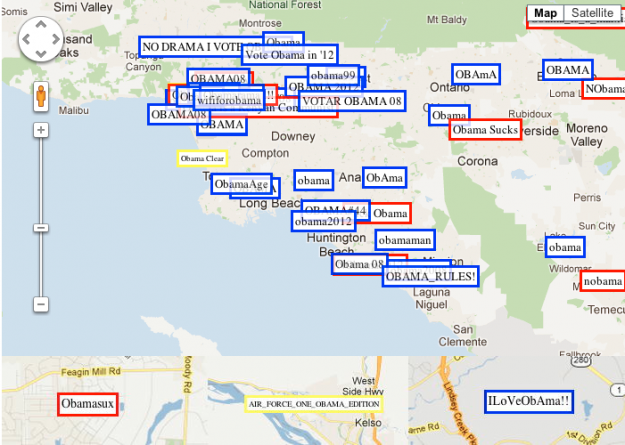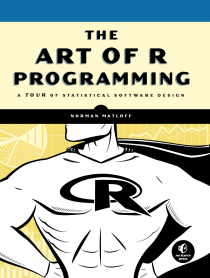Political allegiance via wireless network SSIDs, mapped
Jun 05, 2012 12:11 am • Permalink 
Wireless network SSIDs in residential areas are typically left on default router names like Belkin or LinkSys, but some people use them as a subtle way to broadcast a message. Sometimes it's simple like "DontStealMyInternet" or "Big Bob's playhouse." Others use their SSIDs to make a political statement. With that in mind, James Robinson, a developer for OpenSignalMaps, wondered if political allegiance could be inferred from assigning sentiment to SSIDs.
According to this eccentric measure of sentiment Obama is much more popular outside of the US than within. Why is this? It may be that Obama is genuinely more popular in the rest of the world but maybe it is because outside of the US people are less likely to express negative sentiments towards politicians in this manner. We can't answer this definitively but looking at Argentina, at least, does suggest this is the case.
I'm surprised it was so evenly split in the US between negative and positive since in a way it's like putting a sign up on your lawn. Usually you see signs in support of a candidate rather than one that says an opposing candidate sucks.
Anonymity probably plays the main role in this case. You can't put up a mean sign in front of your house and pretend it's not yours, but you can make an insulting SSID, and no one would be the wiser.

Resources for Getting Started with R
Jun 04, 2012 03:21 am • Permalink R, the open source statistical software environment, is powerful but can be a challenge to approach for beginners. For me, the best way to learn R, especially on the visualization side of things, is to dive right in. Grab some data and make some charts, or better yet, find a graph you like and try to replicate it.
R core functionality and the many available packages let you do a lot without having to know what's going on underneath. I use this approach in Visualize This and the tutorials around here. I like the satisfaction of immediate results. Then I learn the nitty gritty later.
That said, it doesn't hurt to familiarize yourself with the environment. Also, visualization is a small part of what you can do with R, so it can help to know what else you can do analysis-wise.
Direct from R
For starters, you can turn to R itself. Open the console, and enter help.start(). Your browser will open with links to a few manuals and a list of available packages. Of main interest is An Introduction to R. It's in HTML format, but you can also grab the PDF version. I don't recommend reading it from beginning to end, unless you like falling asleep at your desk.
Using R for Data Analysis and Graphics — By Maindonald, this covers similar topics as An Introduction, but it also offers exercises at the end of each chapter.
R for Beginners — This one by Emmanuel Paradis is a bit more manual-like than the previous, but it couldn't hurt to have it available.
Books
 The Art of R Programming — This takes you from beginning to end from a software development perspective. See my review here.
The Art of R Programming — This takes you from beginning to end from a software development perspective. See my review here.
R Cookbook — I reviewed this one, too. If you're familiar with other cookbooks from O'Reilly, you'll recognize the format of this book right away.
R Graphics — Paul Murrell's book is actually too advanced for people new to programming. Plus it's priced academically (read that as expensive textbook). But if you're already a coder familiarizing yourself with R's graphics engine, this is a good one. Don't get this if you're looking for a package or plotting function reference.
Online and Shorter
The manuals and books can be a lot to take in though when you want to get to work on your own data as soon as possible. Here are a couple of resources where you can get nibbles at a time.
R twotorials — This is a collection of 90 two-minute videos by Anthony Damico. Prepare yourself for some fast talking. I'm a slow person in general, so it's rushed for me, but I imagine this could be an interesting three-hour cram session. Just don't blame me if your head explodes.
R Bloggers — There are people scattered across the Web who blog about R. This is simply an aggregator of many of those feeds.
Additionally, despite what some say, the documentation for R is actually pretty good if you know how to use it. Simply enter a question mark followed by the function name for a description of that function and usage. For example, enter ?plot for documentation on plot().
Google is also helpful, which often takes you to Stack Overflow. A search for R used to turn up all sorts of unrelated junk, but it has gotten a lot better. Sometimes it's helpful to include "r-project" or "rstats" in your query to make the search for a letter less ambiguous.
Finally, #rstats on Twitter is the common hashtag for questions and comments.

No comments:
Post a Comment